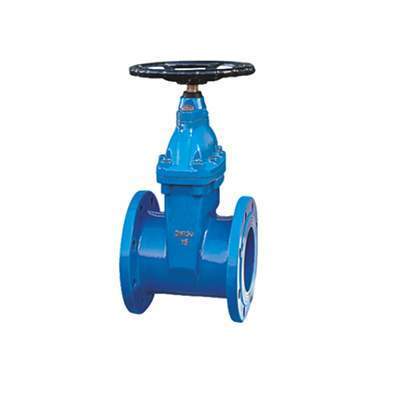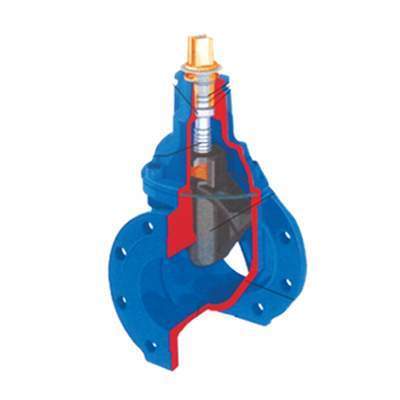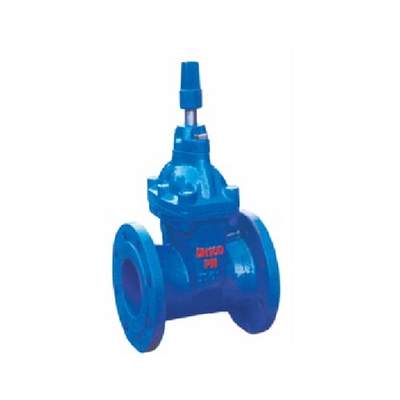Welcome to My Blog!
Before we dive into the content, I’d love for you to join me on my social media platforms where I share more insights, engage with the community, and post updates. Here’s how you can connect with me:
Facebook:https://www.facebook.com/profile.php?id=61563865935136
Now, let’s get started on our journey together. I hope you find the content here insightful, engaging, and valuable.
Introduction

In the realm of fluid control, china soft-seal gate valve has emerged as a pivotal player, offering a blend of reliability, durability, and efficiency. This blog post delves into the intricacies of these valves, exploring their applications, benefits, and frequently asked questions.
What is a China Soft-Seal Gate Valve?
A china soft-seal gate valve is a linear motion valve that utilizes a gate-like disc to control the flow of fluids. The “soft-seal” aspect refers to the elastomeric material, such as EPDM or NBR, that is bonded to the gate or the valve body. This soft seal ensures a leak-tight shutoff, preventing any fluid from passing through when the valve is closed.
Applications of China Soft-Seal Gate Valves
China soft-seal gate valves find extensive use in various industries due to their adaptability and robust performance. Some common applications include:
- Water and Wastewater Treatment: These valves are crucial in controlling the flow of water and wastewater in treatment plants, ensuring efficient and leak-free operations.
- HVAC Systems: In heating, ventilation, and air conditioning systems, china soft-seal gate valves regulate the flow of fluids, maintaining optimal temperatures and system efficiency.
- Fire Protection Systems: The reliability of these valves makes them ideal for fire protection systems, where a leak-tight seal is critical to ensure system readiness.
- Industrial Processes: Various industrial processes, such as chemical processing, manufacturing, and energy production, rely on china soft-seal gate valves for fluid control.
Benefits of Using China Soft-Seal Gate Valves
The popularity of china soft-seal gate valves stems from the numerous advantages they offer:
- Leak-Tight Shutoff: The soft seal design ensures a bubble-tight shutoff, preventing any leakage and conserving resources.
- Durability and Longevity: These valves are built to withstand harsh conditions and offer a long service life, reducing maintenance costs.
- Easy Operation: The linear motion of the gate allows for easy opening and closing, even in high-pressure systems.
- Cost-Effectiveness: China soft-seal gate valves offer a competitive price point compared to other valve types, making them a cost-effective solution.
Types of China Soft-Seal Gate Valves

China soft-seal gate valves come in various types to cater to different application needs:
- Resilient Seated Gate Valves: These valves feature a rubber or elastomer seat that provides a tight seal.
- Metal Seated Gate Valves: These valves use a metal seat for high-temperature or abrasive applications.
- Flanged Gate Valves: These valves have flanged connections for easy installation and maintenance.
- Threaded Gate Valves: These valves have threaded connections for smaller pipe sizes.
Factors to Consider When Choosing a China Soft-Seal Gate Valve
Selecting the right china soft-seal gate valve is crucial for optimal performance. Consider the following factors:
- Fluid Type and Temperature: Ensure the valve’s materials are compatible with the fluid and temperature range.
- Pressure Rating: Choose a valve with a pressure rating that matches the system requirements.
- Valve Size: Select the appropriate valve size for the desired flow rate.
- Connection Type: Choose the connection type that suits your piping system.
Comparison of China Soft-Seal Gate Valves with Other Valve Types
| Feature | China Soft-Seal Gate Valve | Ball Valve | Butterfly Valve |
|---|---|---|---|
| Shutoff | Leak-tight | Tight | Tight |
| Flow Control | Not suitable | Good | Good |
| Pressure Drop | Low | Low | Medium |
| Maintenance | Easy | Easy | Easy |
| Cost | Moderate | Moderate | Low |
| Application | Various | Various | Various |
| Temperature | Moderate | Moderate | Moderate |
| Pressure | Moderate | Moderate | Low |
| Durability | High | High | Medium |
| Installation | Easy | Easy | Easy |
| Operation | Easy | Easy | Easy |
| Automation | Possible | Possible | Possible |
| Abrasive fluids | Not recommended | Not recommended | Not recommended |
| Viscous fluids | Possible | Possible | Possible |
| Corrosive fluids | Possible | Possible | Possible |
Installation and Maintenance of China Soft-Seal Gate Valves

Proper installation and maintenance are essential for the longevity and performance of china soft-seal gate valves. Follow these guidelines:
- Installation: Ensure the valve is installed in the correct orientation and that the piping system is clean.
- Operation: Operate the valve smoothly and avoid excessive force.
- Maintenance: Regularly inspect the valve for any signs of wear or damage.
- Lubrication: Lubricate the valve stem and other moving parts as needed.
Conclusion
China soft-seal gate valves offer a compelling solution for fluid control needs across various industries. Their leak-tight shutoff, durability, and ease of operation make them a preferred choice for engineers and professionals. By understanding the applications, benefits, and selection criteria of these valves, you can make informed decisions and optimize your fluid control systems.
FAQ
Q: What is the pressure rating of a china soft-seal gate valve?
A: The pressure rating varies depending on the valve’s design and materials. Consult the manufacturer’s specifications for the exact pressure rating.
Q: What is the temperature range for a china soft-seal gate valve?
A: The temperature range depends on the valve’s seal material. EPDM seals are typically used for temperatures up to 120°C, while NBR seals are suitable for temperatures up to 80°C.
Q: How do I choose the right size of china soft-seal gate valve?
A: Consider the flow rate and pressure requirements of your system. Consult the manufacturer’s sizing charts for guidance.
Q: What is the difference between a resilient seated gate valve and a metal seated gate valve?
A: A resilient seated gate valve uses a rubber or elastomer seat for a tight seal, while a metal seated gate valve uses a metal seat for high-temperature or abrasive applications.
Q: How do I maintain a china soft-seal gate valve?
A: Regularly inspect the valve for wear or damage, lubricate moving parts, and replace the seal if necessary.
